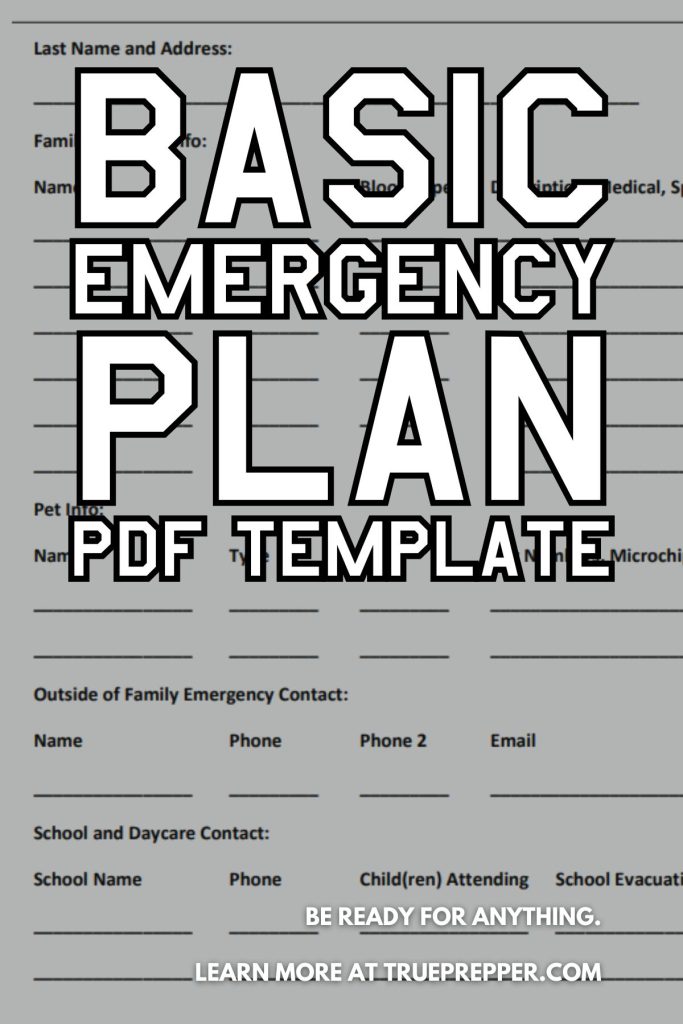
An emergency plan is a crucial component of any preparedness strategy. It serves as a blueprint for addressing daily challenges and personal emergencies that may arise. Developing a basic emergency plan is a simple three-step process that can ensure the safety and well-being of you and your family during times of crisis.
To assist you in this endeavor, we have created an easy-to-use PDF emergency plan template that you can download, print, and share with your loved ones. This comprehensive guide will help you prepare for the worst-case scenarios and equip you with the necessary tools to navigate through challenging situations.
Table of Contents
- Steps to Create an Emergency Plan
- The Basic Emergency Plan PDF Template
- Finishing Touches on Your Plan
Steps to Create an Emergency Plan
Creating an emergency plan is a straightforward process when utilizing a pre-formatted template. Our template focuses on three essential steps: threat assessment, responsibility assignment, and practice coordination. These steps mirror the approach used by professional emergency managers when developing comprehensive plans.
Step 1: Identify Potential Threats
Basic emergencies pose a universal threat to every household. It is essential to prepare for common occurrences such as fires, home invasions, and power outages. Our TrueRisk index provides a comprehensive assessment of potential threats based on weighted risk factors. Conducting your own risk assessment, taking into account your geographical location, can further enhance your preparedness efforts.
Step 2: Assign Responsibilities
Your emergency plan should clearly outline various responsibilities and designate individuals accountable for them. Assigning specific tasks to every family member, regardless of their scale, ensures that everyone has a role to play during an emergency. Having a pre-assigned purpose can help individuals avoid freezing up or acting unpredictably in high-stress situations.
Step 3: Practice the Plan
Practice makes perfect, or at least prepares you to handle emergencies more effectively. Familiarize yourself with the potential challenges and shortcomings of your plan before an actual emergency occurs. By doing so, you can avoid miscommunication and confusion that may arise from poorly executed changes. Regularly update your family members on any revisions to the plan and ensure that everyone knows where to access it during an emergency.
The Basic Emergency Plan PDF Template
Now that we've covered the fundamental steps, let's delve into how to complete the template. First, download and print the basic emergency plan PDF template, which consists of three concise pages that encompass crucial aspects of emergency preparedness. You can access the template via this BASIC EMERGENCY PLAN PDF link.
Page 1: Contact Information
- Enter your last name, home address, and the date of plan revision.
- Provide detailed family information, including the main contact person. Include the first name, preferred contact number (usually a mobile phone), blood type, and any relevant medical information or special needs. It's advisable to include allergy information, even though it may overlap with medical files.
- Include information about your pets, whether you plan to evacuate with them or leave them behind. Further details will be addressed in a subsequent section.
- Designate an outside emergency contact who is not residing in the same household.
- Include relevant school or daycare information, if applicable. Completing these steps will ensure the first page is fully filled out.
Page 2: Action Plan
- Once you initiate the action plan section, it becomes easier to complete. Start by listing the specific threats you are preparing for.
- Identify escape routes from your home to an outside gathering area, if possible, attach a map with a corresponding illustration.
- Specify the local evacuation point where your family will meet in case of a fire or localized disaster at your residence.
- Determine a distant evacuation point, or Bug out Location (BOL), where your family will gather in the event of a regional or geographical emergency.
- Describe the route you will take to reach your Bug out Location and consider attaching a map for clarity.
- Outline an alternate route to your Bug out Location, considering possible road blockages and other potential risks. Attach a map illustrating this alternative route.
- Select a designated shelter-in-place room within your home—————————————————————————————————————————————————————————————–
By: Rusty Collins
Title: Creating a Comprehensive Emergency Plan: A Step-by-Step Guide
Sourced From: www.trueprepper.com/basic-emergency-plan/
Published Date: Fri, 02 Feb 2024 12:41:39 +0000

